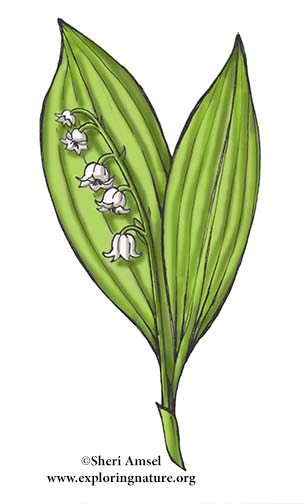


Up to 10" tall - blooms in late spring. Flowers are white bells that all hang along one side of a lone stem surrounded by 2-3 large, showy leaves.
Flower Type: Flowers with 6 petals fused into dangling bells along one side at the top of the flower stalk (raceme)
Flower Color: White
Leaf Arrangement: From around the base
Plant Type: Wildflower (Small - 4-10 inches)
Leaf Type: Long ovals, entire (smooth edged), 2-3 around the flower stalk
Escaped garden flower spreading in the wild.
When you research information you must cite the reference. Citing for websites is different from citing from books, magazines and periodicals. The style of citing shown here is from the MLA Style Citations (Modern Language Association).
When citing a WEBSITE the general format is as follows.
Author Last Name, First Name(s). "Title: Subtitle of Part of Web Page, if appropriate." Title: Subtitle: Section of Page if appropriate. Sponsoring/Publishing Agency, If Given. Additional significant descriptive information. Date of Electronic Publication or other Date, such as Last Updated. Day Month Year of access < URL >.
Amsel, Sheri. "Lily-of-the-Valley" Exploring Nature Educational Resource ©2005-2024. December 15, 2024
< http://www.exploringnature.org/db/view/Lily-of-the-Valley >